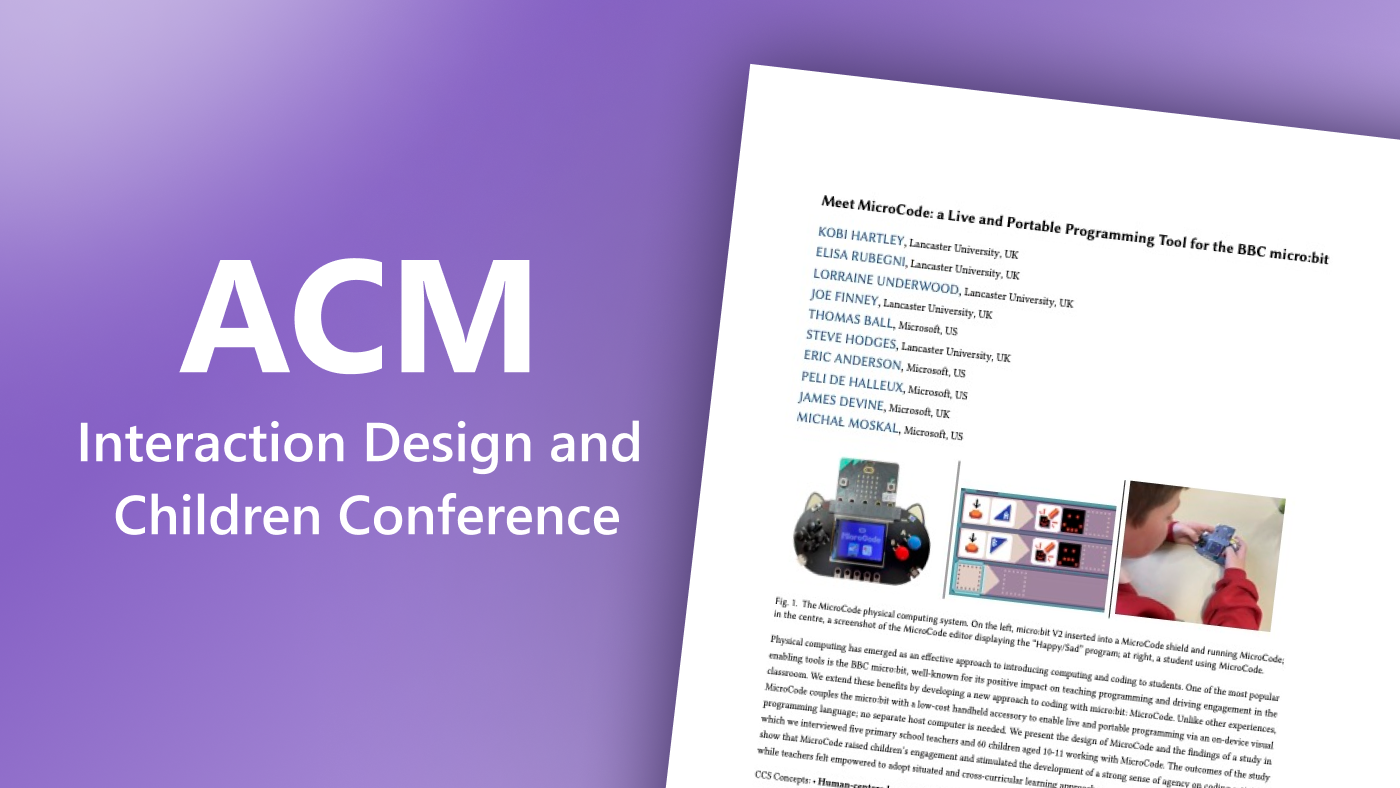By Rob Knies, Managing Editor, Microsoft Research
It was just past dusk when we ventured into the heart of the Nakalabande slum in the Jayanagar area of south-central Bangalore. We were seven in number—Kentaro, Udai, Vidya, Indrani, and me, accompanied by a reporter and a cameraman from Aaj Tak, one of India’s leading Hindi news channels. A skinny dog ambled listlessly by as we headed up an alley, then turned left into a warren of narrow walkways, feeling our way in the cool November night. A turn here, a turn there, and we arrived at our destination, a tiny house with a roof of corrugated steel. Inside the door was a small room, 8 feet wide and 10 feet long, with dingy green paint on the walls, overflowing with children, more than a dozen of them, ranging in age from 8 to 15. We came bearing a gift: an opportunity to gain entry into the IT revolution. A few of us were beckoned inside.
* * *
Microsoft Research Blog
Udai Singh Pawar is one of those lucky persons able to match a particular goal with the training, the motivation, and the wherewithal to achieve it. In his case, the goal is to improve the quality of education in his native India.
Pawar, an assistant researcher for Microsoft Research’s India lab (opens in new tab), located in Bangalore, had taken note of a challenge endemic to schools in his part of the world: not enough computers to go around. In such a scenario, what typically happens is that one child sits in front of a PC, hand on mouse, while others gather round. The result is no surprise: The mouse-manipulating student learns computer skills and masters the subject at hand, and the others grow bored and disengaged.
To help share the learning among a larger pool of students, Pawar developed a solution called Multimouse, with which as many as 10 students at once can use, and therefore learn from, a PC.
In a paper entitled Multiple Mice for Computers in Education in Developing Countries (opens in new tab)—to be presented during ICTD 2006, the International Conference on Information and Communication Technologies and Development, co-sponsored by Microsoft Research India and to be held at the University of California Berkeley on May 25-26—co-authors Pawar, University of California Berkeley Ph.D. student Joyojeet Pal, and Kentaro Toyama, assistant managing director of Microsoft Research India, state, “The obvious technical solution is to provide each child with a mouse and cursor on screen, thus effectively multiplying the amount of interaction per student per PC for the cost of a few extra mice.”
“In countries like India and China,” Pawar says, “there’s a lot of interest in using computers in rural villages, but because of financial reasons, you can’t have enough of them. This was the model for the whole program. There are so many children and not enough computers, so computers are shared, and children fight for the mouse.”
The multiple-input technique, termed Single Display Groupware, has been around for a while, but, to Pawar’s surprise, it had not been applied to an educational setting for poor communities. Sensing a unique opportunity, he set about changing that.
* * *
It was a tight squeeze inside the house. Kentaro and Udai began to connect a laptop computer. The children stared quizzically at their sudden, strange visitors. A cameraman? An American? “What’s your name?” inquired one raven-haired beauty, about 10. When told, she paused, then repeated: “Rob?” She began to giggle, and the others followed in suit. Here, 21 travel hours and 10,000 miles removed from home, why wouldn’t my presence have prompted a temporary, odd diversion? But that didn’t last long. Udai clicked an icon on the laptop, and the children pushed forward for a better look.
* * *
Pawar, with assistance from Toyama and Sushma Uppala, a research intern at that lab, developed software that enables multi-colored cursors to co-exist on a single computer monitor and devised a couple of sample games to serve as a proof of concept. They also had to write a mouse driver that would enable Windows® to allow use of multiple mice and cursors on one monitor simultaneously.
“We feel Multimouse is a really good, new, interactive technology,” Pawar says, “for any educational application. But if we want people to buy into the model, we need to allow them to use it for themselves.”
To that end, the team is building a software-development kit, to be distributed online this summer. Included in that kit will be a simple application, being developed by Uppala, that will enable schools, teachers, and even students to build their own Multimouse content.
But just as valuable to ultimate users is providing a glimpse of the potential for such technology.
“What I’m doing right now,” Pawar says, “is making sure it’s robust, making sure that other people can use it, so that I can give it to folks, they can make their own applications, and they can run it.”
Such applications can vary in nature. Some could be competitive. Some might involve learning by sharing. Some figure to be collaborative; those could become particularly education-rich. And some might even be teacher-directed. But all must be created anew; single-user programs are inadequate for use with Multimouse.
“My aim,” Pawar states, “is to build an application along all these different areas to show how Multimouse can be used.”
* * *
The TV cameraman shot video as one child at a time used a mouse to operate the laptop—nothing too compelling. Then Udai opened his project software and connected five mice to the laptop, and five children began answering questions posed by the software, murmuring delightedly when their responses were accurate, laughing when an incorrect answer elicited a mild reprimand. My new, giggly friend sat on the floor next to me, clutching my left knee, enraptured by the demonstration. The mice changed hands; other kids took a turn. One laptop, a room full of engaged learners.
* * *
Initial experiments with Multimouse proved promising. Pawar and associates took the technology to three schools in Bangalore, two of them located in urban slums, the third a residential school run by a private foundation. From these trials, the team gained four key observations:
- Children immediately understand the idea of multiple mice and cursors.
- Children are not confused by multiple cursors on a screen.
- Children with mice remain engaged throughout.
- Overall engagement increases, even for children without a mouse.
The latter was particularly intriguing. It seems that, with multiple mice, there were increased opportunities for active participation, with mouse exchange proving more frequent. Just the prospect of soon having an opportunity to take control of the mouse and its associated cursor was enough to keep the kids’ minds from wandering.
Students were asked their impressions about their Multimouse experience. Some responses:
- “Now, we don’t have to fight for the mouse.”
- “Everyone can share.”
- “Having more mice gives everyone a chance.”
Such eagerness to learn is certain to warm the hearts of parents whose children might benefit from Multimouse.
* * *
Udai launched another program, this one a grid of white rectangles, nine wide, eight deep. The five mice were redistributed, each with a different-colored cursor—pink, blue, red, green, yellow. When the children clicked on the rectangles, they changed to the color of the cursor that had clicked on them. The kids grew excited—laughing, battling, claiming others’ rectangles, counting their on-screen bounty. Who knew a little laptop could be so easy to use, could provide so much fun?
* * *
“It’s a very simple idea,” Pawar says of Multimouse, “just plugging in different mice and getting different cursors, but it is a big paradigm shift in how we use the computer. It’s very exciting that we are enabling people to work together.”
So what’s next?
“When people start using it,” Pawar says, “there will be a lot of different ways they will use it. The most important part is to do a lot of research on how it’s being used, to maximize the learning value. One thing is the deployment: making it, enabling it in schools. The other is pure research: How are children using the collaborative methods? How are children using the competitive method? Are they really learning what we want them to learn?
“You develop a whole world of questions. A lot of testing, a lot of surveys—there are a lot of things we can do.”
But that work aside, it is the simplicity of the concept that makes it so enticing—and so eminently deployable.
“It is extremely feasible,” he says, “because it doesn’t require a hardware change, it doesn’t require a deep investment, only a couple of mice and the software. For a few dollars, we can multiply the value of any PC in a school.
“In terms of implementation from the prospect of the stakeholders—the teachers, the governmental bodies, the funding agencies—we feel it is a very interesting project that can scale very fast.”
* * *
It was time to leave. The visitors filed out first, then the children, heading home, expressing thanks, and saying farewell. “Goodbye, Rob,” they giggled, hands to mouths. A couple of older, more intrepid boys wanted to try out their elaborate handshakes: interlocking thumbs, interlocking fingertips, fist-to-fist, up high, down low. Udai and Kentaro obliged, and I tried to emulate their success. We all, it seems, have a lot to learn.
* * *
Pawar, a graduate of the Indian Institute of Technology Kanpur, recalls the moment when he first became fascinated with the learning process.
“When I was in college,” he says, “I was involved in a project that involved using robotics kits to teach science to children in remote villages. It got me very interested in how you can use technology to teach. This really got me involved in the whole area of education technology and learning. I was also interested in the psychology of learning.”
Thus, it is particularly rewarding to have developed Multimouse, technology that promises to help children at even the most resource-strapped schools learn computer skills and take advantage of 21st-century instructional techniques.
“Learning,” Pawar says, “is a very important thing. The most fun you ever had in school was when you were learning together and building a project together or solving something together. It is a very social thing, an interaction: I tell you something, you tell me something, we discuss, and that’s how learning happens.
“Putting technology into the mix and making technology part of the whole social interaction of learning is something that is very interesting.”





